Earlier this week I had the pleasure of being at the Vilna Shul, Boston’s Center for Jewish Culture, as we welcomed five members of the Boston City Council along with several members of Mayor Wu’s cabinet into the sukkah. The visit, organized by the Vilna together with Councilor Kenzie Bok (representing district 8, home to the Vilna) and Council President Ed Flynn (a long-time dear friend and partner to our community and to JCRC), was an opportunity to share and celebrate our holiday tradition, to experience this historic space, and to engage in a discussion about the past and future of the Jewish community in the city of Boston.
The Vilna was created by Lithuanian immigrants in 1919 as a spiritual center in their new country. In 1995 a massive 10-year restoration project took place, including uncovering and restoring the original Jewish folk art murals. Today the Vilna is the only immigrant era synagogue in Boston, is a registered museum through the Council of American Jewish Museums and serves as a cultural center.
Caron Tabb, the accomplished visual artist who designed this sukkah installation, explained the symbols and meanings of the sukkah and her interpretation of it. Then Dalit Ballen Horn, executive director of the Vilna, gave a tour of the sanctuary and the restoration work – which is supported, in part, by the city’s community preservation fund.

Photo Courtesy of Vilna Shul
To be in this space is to experience the layers of Jewish identity. The ark expresses an identification with this country – with its prominent American eagle – and also, more specifically, with New England through carved seashells (an unusual motif for a Jewish space). The walls have mosaics envisioning the ancient homeland and sacred places of the Jewish people in Bethlehem and Hebron (in a building constructed before there was a State of Israel). The language above the door is Yiddish but uses English words. And of course, the name expresses the most immediate prior land from which the congregation’s founders came to America – Vilnius, (now in) Lithuania.
I am always inspired when I am here. The councilors and cabinet members clearly were as well.

When we sat down for a more intimate conversation about Boston’s Jewish community with Dalit, CJP’s Marc Baker, and myself, folks around the table opened up, sharing heartfelt and personal experiences of their Jewish journeys. We remembered those who’ve inspired and partnered with us over the decades, and discussed the work we’ve done together and our shared hopes for our partnership going forward. It was inspiring and energizing.
It was a reaffirmation of a long partnership between civic leaders who value the Jewish community in Boston, and a community that values our legacy in this city as well as our commitment to its future.
The city of Boston, with some 40,000 Jewish residents, continues to be one of the primary population centers of our local Jewish community – roughly equal in numbers to Brookline and Newton (albeit in a city with a much larger overall population). Boston’s Jewish community is also, in many ways, more diverse and diffuse than that of the region as a whole – it includes Orthodox, Russian, queer and Reconstructionist communities; seniors, young adults and empty nesters. And, it is spread out across neighborhoods that include Brighton, JP, West Roxbury and the downtown area. There is no one dominant center of Jewish life in the city, but rather several centers, each with its own flavors, traditions, and richness. Still, all these communities are invested in the future of the city and are participants in the vibrancy of their neighborhoods.
Community relations – the building of connection, understanding and partnership between Jewish communities and our civic neighbors – isn’t just the work of JCRC. It’s the work of all our network members – the cultural, religious, activist, and social institutions that make up JCRC and who are the fabric of our vital community.
This week’s visit of the Boston City Council to a sukkah came from the work being done by Vilna to situate itself in the broader Beacon Hill community – including its own heritage connected to that neighborhood’s early African-American legacy and the Baptist church that became Vilna’s first home in the area. Our time together built on the relationships that Vilna leaders have invested in with the public officials representing their neighborhood.
So, kudos to the Vilna team, to Dalit, and to board chair Bob Thurer (who was also with us) for bringing us all together this week. And congratulations, again, to everyone who has been part of the revitalization of this space as a cultural and civic anchor in the city in recent years (I encourage you to take a tour!). I’m excited to see Vilna prosper, and to build on the relationships we nurtured, together, this week.
Shabbat Shalom,
Jeremy
Jeremy BurtonCEO, Jewish Community Relations Council



